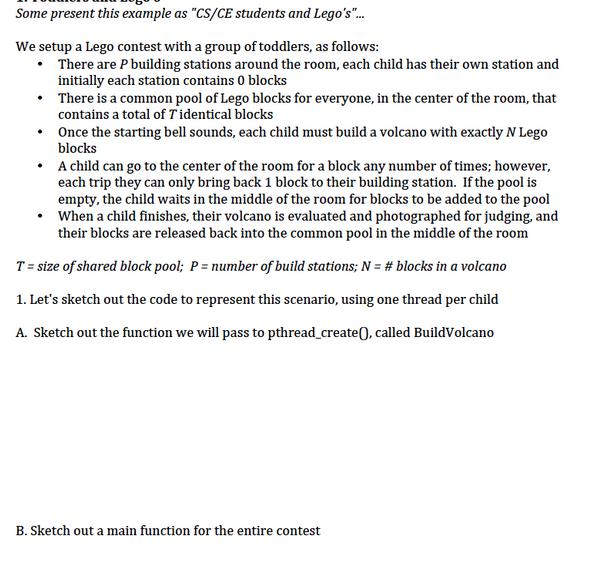Answered step by step
Verified Expert Solution
Question
1 Approved Answer
Some present this example as CS/CE students and Lego's... We setup a Lego contest with a group of toddlers, as follows: . There are

Some present this example as "CS/CE students and Lego's"... We setup a Lego contest with a group of toddlers, as follows: . There are P building stations around the room, each child has their own station and initially each station contains 0 blocks There is a common pool of Lego blocks for everyone, in the center of the room, that contains a total of Tidentical blocks Once the starting bell sounds, each child must build a volcano with exactly N Lego blocks . A child can go to the center of the room for a block any number of times; however, each trip they can only bring back 1 block to their building station. If the pool is empty, the child waits in the middle of the room for blocks to be added to the pool When a child finishes, their volcano is evaluated and photographed for judging, and their blocks are released back into the common pool in the middle of the room T = size of shared block pool; P= number of build stations; N = # blocks in a volcano 1. Let's sketch out the code to represent this scenario, using one thread per child A. Sketch out the function we will pass to pthread_create(), called BuildVolcano B. Sketch out a main function for the entire contest
Step by Step Solution
There are 3 Steps involved in it
Step: 1

Get Instant Access to Expert-Tailored Solutions
See step-by-step solutions with expert insights and AI powered tools for academic success
Step: 2

Step: 3

Ace Your Homework with AI
Get the answers you need in no time with our AI-driven, step-by-step assistance
Get Started


